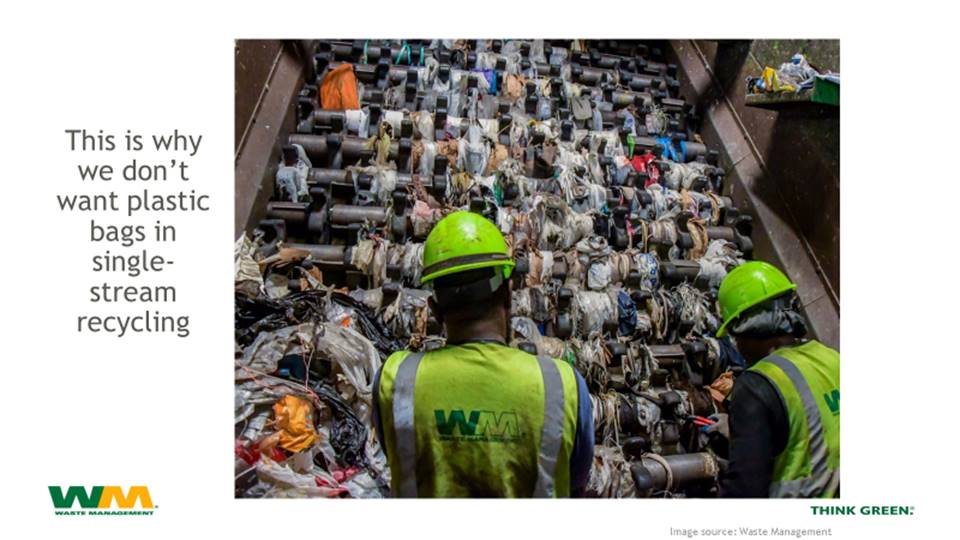|
Single stream recycling is really confusing. It encourages practicing some wishful recycling, hoping that the candy wrapper or old CD can be recycled. Since my household is trying to get to zero waste, I needed to get to the bottom of what is recyclable and what is not. My friend Liia and I took ourselves on a little field trip to tour Waste Management's MRF (Materials Recovery Facility) in NE Denver. Our guide Lara showed us the rushing conveyor belts, and patiently answered our barrage of questions. The biggest question plaguing me: what plastics are getting recycled today? It depends on the market price. If Waste Management can find a buyer, they will separate out that plastic for recycling. If there isn't a market, it goes into the landfill. I saw workers tossing plastic clamshell packaging and bottles, as well as all the tiny bits of plastic. Since China changed their policy on recycling, the market disappeared for #3-#7 plastics. It might come back, so Lara suggested that we should keep putting larger plastics into single stream. For now, they are headed to the landfill. The second question: can small bits of plastic get recycled? The definitive answer is anything bigger than a postage stamp can get recycled. I was asking the wrong question. It's not about small or big, it is about rigidity. Soft plastics give the MRFs the most trouble. Plastic bags, shrink packaging, and other films tangle in the machines. I thought the bag ban was just for grocery store bags. Actually, it is any kind of plastic bag material. They wrap around the machines that separate the cardboard and paper from the glass and metal, and cause the lines to shut down frequently. They shut down five times in our half hour tour! That is not efficient. I also wanted to know about cleanliness. How clean do your containers need to be to be recycled? I though they needed to be spotless, but I was wrong. They just need to be 90% cleaned out, and dry. The main problem with dirty and wet containers is that they ruin the paper and cardboard in the single stream. The little excess food will burn off when the plastics actually get recycled, so you don't need to polish every container. Just give it a good rinse and dry.
The paper and cardboard also don't need to be pristine, they often get wet and dry again before they are recycled into pulp. The issue is grease. Greasy cardboard and paper can't be recycled. Good news, they can be composted! Here were my biggest lessons to recycle correctly in the Front Range:
Please post your questions here if you have them! You can find out about recycling drop off in Aurora (my friend Liia's program) by looking up Aurora.gov recycling.
9 Comments
|
Carolyn
Hey there! I'm the CEO and founder of Wompost. Wompost stands for Woman Owned Composting, and we make composting simple. Archives
March 2024
Categories |
Proudly powered by Weebly


 RSS Feed
RSS Feed